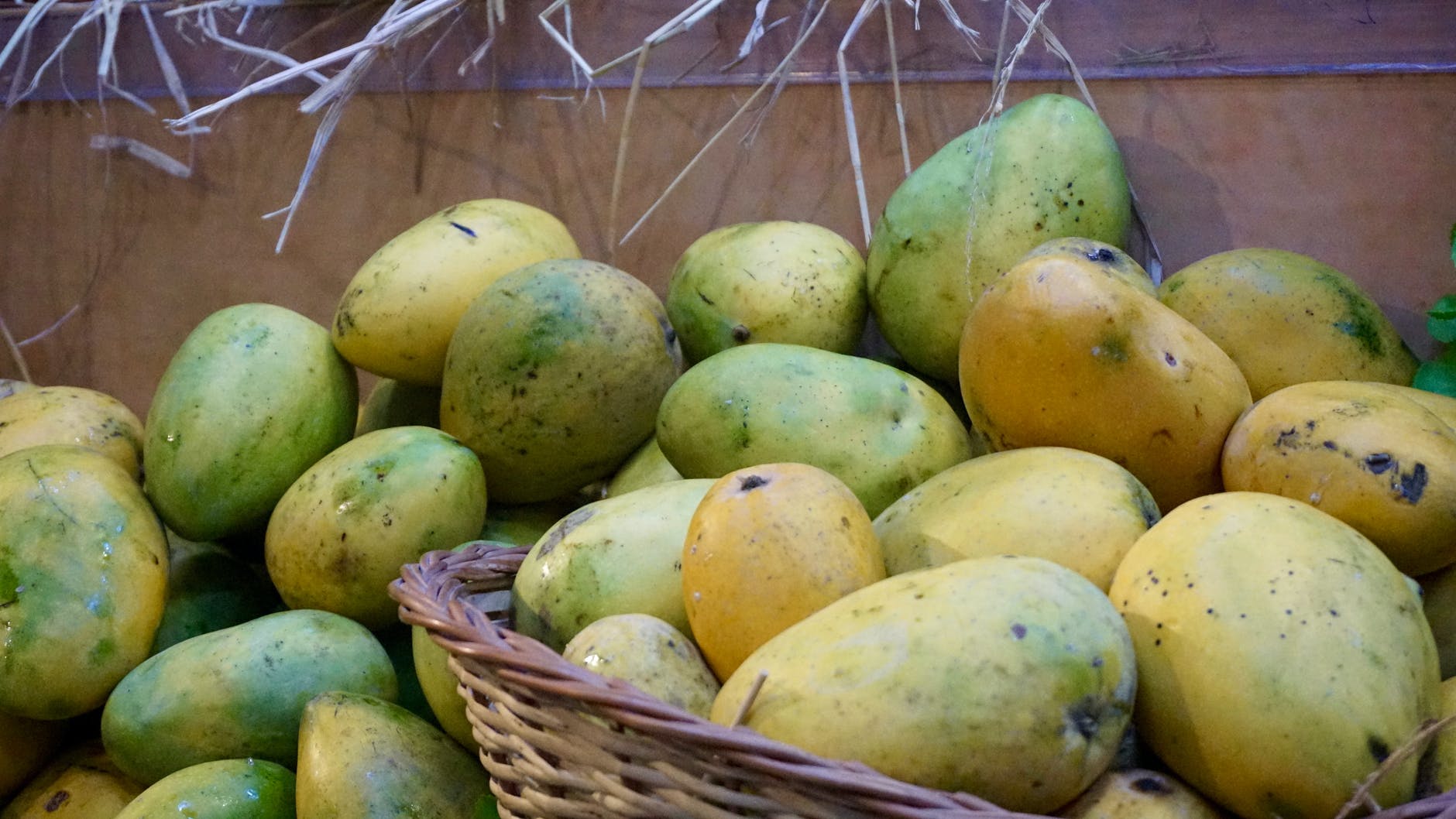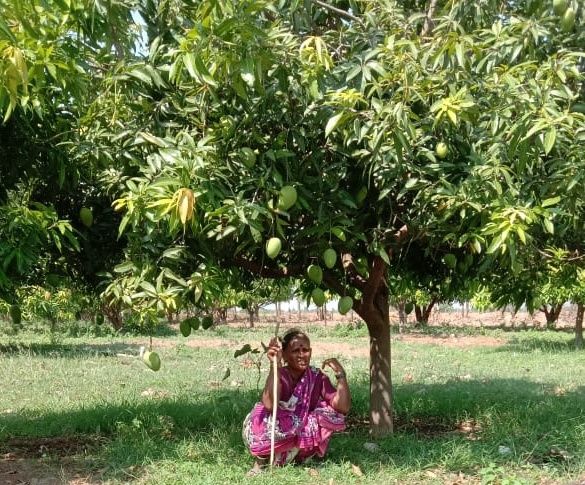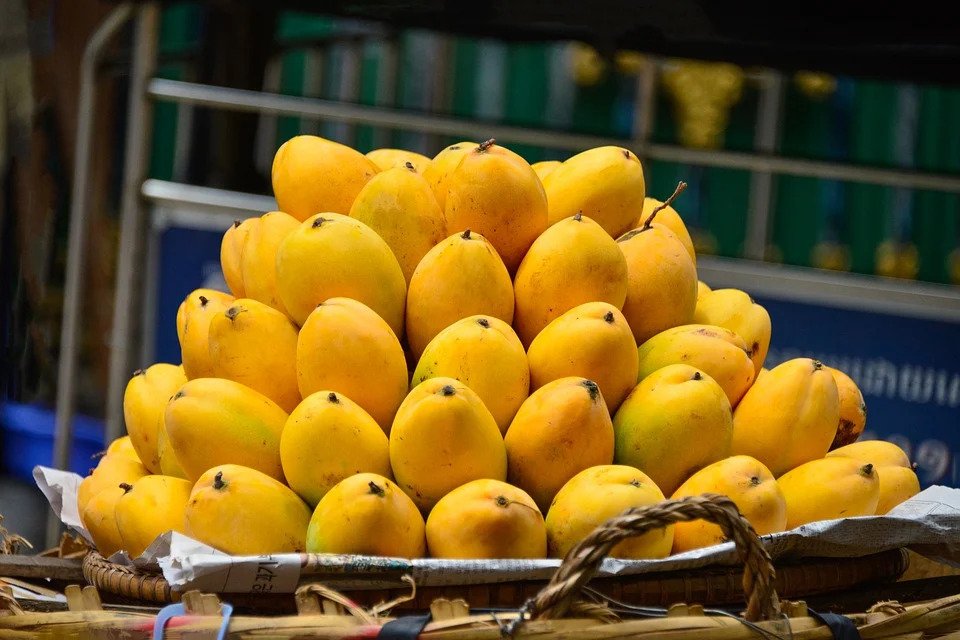Lockdown and weather woes: It’s not a happy summer for the mango farmers in India
Hailstorms, unseasonal rain, and thunderstorms have affected mango production in the country. Now, the farmers are struggling to sell their produce due to the lockdown


It has been a double whammy for the mango farmers in India because of the nationwide lockdown and unfavourable weather conditions. As soon as the trees started blooming, they were hit by the hailstorms. Later, the unseasonal rain and the thunderstorm ruined most of the mango plantations. Now, it is difficult for the farmers to sell the mangoes during the lockdown.
Mangoes are widely cultivated in the country across states like Maharashtra, Gujarat, Telangana, Andhra Pradesh, Karnataka, West Bengal, and Uttar Pradesh. Uttar Pradesh ranks first in terms of mango production with a 23.47% share.
Between March and August, different varieties of mangoes are sold in the markets. The Alphonso mangoes from Ratnagiri and Sindhudurg in Maharashtra hit the markets by March and are sold until June. Alphonso mangoes are also exported.

Omkar Sapre lives in Deogarh Taluka in the Sindhudurg district of Maharashtra. He owns a company called Deogarh Alphonso and more than 700 farmers are associated with him.
Omkar said: “The Vashi market in Mumbai is the largest market for the Alphonso. Farmers from all over the state come here with their mangoes. The mango markets in Pune and Kolhapur are other major markets. This lockdown has worsened the condition of the farmers.”
He added: “The hapus (Alphonso) starts ripening from March and is sold until the arrival of the monsoon. However, the markets have remained closed in April this year. In the same month last year, 30,000 tonnes of mango had arrived in the Vashi market. This time, only 900 tonnes of mangoes have reached the market so far. Seen this way, there is a loss of 97 per cent.”
The demand for the Indian Alphonso is very high in the US and the European and Gulf countries. Though the exports have taken a hit due to the coronavirus pandemic, the demand has not been disappointing in the local market. However, due to the lockdown, it has not been possible to send Alphonso mangoes to the other parts of the country.
The situation is not upbeat in the Southern states of Karnataka, Andhra Pradesh, and Telangana, which are the major mango-producing states.

Mohammad Aijaz, a farmer from Secunderabad in Telangana, grows purely organic Banganapalli mango variety in his orchards. He said: “The mangoes in my orchard begin to ripen in May, but, this time, the mangoes in our region too have taken a lot of damage due to the bad weather. Anyway, we won’t be able to sell mangoes due to the lockdown. I am planning to distribute these mangoes among my friends and relatives for free.”
He added: “The organically-farmed mangoes used to fetch me a better price than other farmers. Those living in the cities used to arrive and buy from me. However, this time, it does not seem that anyone will be able to come.”
The mango varieties grown in India are Dussheri, Langra, Chowsa, Fazli, Bombay green, Bombay Alphonso, Bangana Palli, Himsagar, Kesar, Kishen Bhog, Malgoa, Neelam, Survan rekha, Vanraj and Zardalu. The new varieties include Mallika, Amrapali, Ratna, Arka Arun, Arma Puneet, Arka Anmol and Dussheri-51. In North India, mainly Gaurjit, Bombay Green, Dussheri, Langra, Chowsa and Lucknow Safeda varieties are grown.
In the 13 districts of Uttar Pradesh, 45 lakh metric tonnes of mangoes are produced every year, out of which seven lakh metric tonnes of mangoes are produced at Malihabad in the Lucknow district. Due to the hailstorms and rain during the flowering time, the yield got majorly affected this time. From March to May, there were strong winds several times which also led to the falling down of remaining mangoes. Now, the farmers face the arduous task of selling their leftover produce during the lockdown. The major mango producing districts of Uttar Pradesh are Lucknow, Amroha, Sambhal, Muzaffarnagar and Saharanpur where mangoes are grown over about 2.5 lakh hectares in different areas. Among them are Dussehri, Chowsa, Langda, Fazali, Mallika, Gulab khas and Amrapali.

Gaurav Singh, a resident of Ranipara village of Malihabad Tehsil, has twenty bighas of mango orchards. Gaurav said: “Throughout the year, we work hard to grow mangoes and this provides our year-long earnings. But, this time, the weather did not cooperate. The recent thunderstorm has forced the mangoes off the trees, and hailstorms have pelted the remaining mangoes. Now, we face the problem of selling mangoes that have survived. The lockdown has prevented any trader to access us while most of the orchard’s produce should have been sold by now.”
Mango Growers of India has also written a letter to the Government of Uttar Pradesh. The association has demanded from the government that mangoes should be procured like other crops such as paddy, wheat and potato to protect the mango farmers from losses.
Inseram Ali, the president of Mango Growers of India, said: “The mango farmers are constantly suffering. As it is, this time lesser mango had flowered and now the incessant storm and rain have further lost it up to 20-25 per cent. Every time, we used to produce 50 lakh metric tonnes whereas only 30-35 lakh tonnes of mangoes had come up this time which too got pummeled by gale-rain. It starts to come out the latest by June, but this time not a single trader has come. Every year, traders used to buy 80-90 per cent of the orchard. It has been for the first time when the orchards remain unsold.”
He added: “This time the farmers are also finding it difficult to protect the yield in the orchards due to the absence of the labourers following the lockdown. We try to send mangoes to the market, but if the traders will not come. Who will buy the mangoes? Every year, the traders came from Delhi, Mumbai and Punjab but not this time. The government should also buy mangoes like it buys potatoes or wheat, but it does not consider us as farmers.”

India is also a major exporter of fresh mangoes in the world. In 2018-19, India had exported 4,6510.27 metric tonnes of fresh mangoes worth Rs 406.45 crore. The mangoes from Uttar Pradesh are mainly exported to the Gulf countries, including Iran, the United Arab Emirates (UAE), Saudi Arabia, Qatar and Kuwait, and Bangladesh. Mango varieties grown in South India are usually shipped to the Southeast-Asian countries like Malaysia and Singapore.
Although India produces more than 40 per cent of the global production, followed by China, Thailand and Pakistan, a larger yield of the fruit is consumed domestically and exported only in a small quantity.
Nadeem Siddiqui, the Mango Export Association of Uttar Pradesh’s state president said: “The rain had ruined the mango blossom this time and when the time came for the fruit to be ready, corona happened. Every year, countries like Italy, Japan, Australia, as well as the Gulf countries, had common exports from here. About 250 tonnes of mangoes are supplied to other countries every year from UP. But this time the mango farmer is going to suffer a lot.”
He added: “In the last two years, there was a mango trade of 2,400-2,500 crore, which will come down to 600-800 crore this time.”

